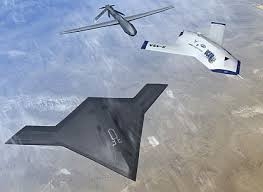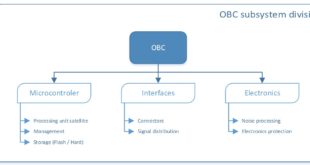The Internet-of-Things is an ongoing revolution in the ICT sector under which there is shift from an “Internet used for interconnecting end-user devices” to an “Internet used for interconnecting smart physical objects that communicate with each other and/or with humans in order to offer a given service”. The advancements of …
Read More »Airforce develop Artificial Intelligence and Autonomous Systems to meet challenges of Cyber-Attacks, Anti-Access/Area-Denial (A2SD) actions and Space Threats
The current Armed drones like Predators and Reapers are essentially remote controlled that is they involve human operators remotely controlling the vehicle with the assistance of fairly low levels of automation for some functions (e.g., the operator specifies waypoints to be followed by the platform). Systems like these have proved …
Read More »Rising Open Source Intelligence (OSINT) importance for Military
Intelligence, in military science, information concerning an enemy or an area. The term is also used for an agency that gathers such information. Military intelligence is as old as warfare itself. Even in biblical times, Moses sent spies to live with the Canaanites in order to learn about their ways and …
Read More »DARPA EC developing AI based military sensor fusion technologies to optimally combine information originating from multiple heterogeneous sensors and subsystems.
Current artificial intelligence (AI) systems only compute with what they have been programmed or trained for in advance; they have no ability to learn from data input during execution time, and cannot adapt on-line to changes they encounter in real environments. The AIE program is one key element of …
Read More »DARPA CASTLE developing AI-toolkit for network hardening against advanced persistent threats (APT)
Computer networks are more than ever exposed to cyber threats of increasing frequency, complexity and sophistication. Penetration testing (also known as pentesting or PT) is a common practice for actively assessing the defenses of a computer network by planning and executing all possible attacks to discover and exploit existing vulnerabilities. In …
Read More »Multi-Robot Collaborative Localization
Humanitarian Crisis scenarios occur frequently and they typically require immediate rescue intervention. In many cases, the scene conditions may be prohibitive for the human rescuers to provide instant aid, as they have to act within hazardous conditions, like collapsed buildings, air-poisoned, or radioactive environments. Many organizations and research teams are …
Read More »Healthcare data and Analytics
The healthcare sector is seeing immense growth worldwide, and the USA is no exception to the phenomena. Healthcare takes more than 10% of the GDP of most developed countries. In fact, for the USA, this figure will be close to 18% by the end of 2019. This isn’t surprising—the healthcare sector …
Read More »China controls internet to curb dissent , employs widespread surveillance for ‘anti-terror’ measures and for repression of people
With President Xi Jinping at the helm, the Chinese government doubled down on repression inside and outside the country in 2021, says world report 2022 on human rights. Its “zero-tolerance” policy towards Covid-19 strengthened the authorities’ hand, as they imposed harsh policies in the name of public health. Beijing’s …
Read More »Accurate modeling of metabolic processes for bioproduction, drug targeting, and bioremediation.
All living things require metabolism. Metabolism is the process by which the body changes food and drink into energy. During this process, calories in food and drinks mix with oxygen to make the energy the body needs. Even at rest, a body needs energy for all it does. Metabolism …
Read More »Satellite Command and data handling (C&DH) & On-board computer (OBC) technologies
Spacecraft are man-made machines that operate in space. An orbiting spacecraft is normally referred to as a satellite, although it is manmade as opposed to a natural satellite like our moon. A spacecraft is typically subdivided into two major parts, the payload and the bus. The bus provides the structural body …
Read More » International Defense Security & Technology Your trusted Source for News, Research and Analysis
International Defense Security & Technology Your trusted Source for News, Research and Analysis


